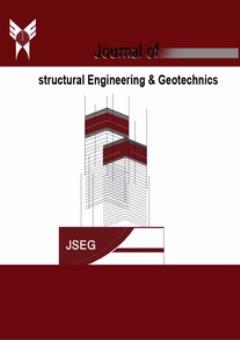Most of the existing concrete dams are subjected to cracking. These cracks are caused by various factors such as construction practices, curing, loads and volume change of mass concrete which reduce the efficiency, failure or instability of concrete dams. Using fracture
More
Most of the existing concrete dams are subjected to cracking. These cracks are caused by various factors such as construction practices, curing, loads and volume change of mass concrete which reduce the efficiency, failure or instability of concrete dams. Using fracture mechanics as a new method to estimate stability and durability of concrete dams is recommended in scientific publications in worldwide. This study aimed to apply the principles and criteria of linear elastic fracture mechanics to evaluate the propagation of cracks in body and foundation of Kalat concrete gravity dam -that is located in the northern province of Khorasan Razavi, Iran- subjected to the worst-case loading, including the extraordinary loading case due to earthquake with full reservoir. For this purpose, ZENCRACK-v 7.7 and ABAQUS-v 6.10.1 software were utilized and nonlinear analysis of finite element are performed. Subsequently, linear elastic fracture mechanics criteria including stress intensity factor and maximum circumferential stress were calculated for existing cracks in various parts of dam body and foundation and stability of initial cracks, kinking angle and extension of them were determined. Based on the obtained results, crack propagation in areas near to both dam abutments is investigated. To do so, a plain strain condition is assumed that only expanded in longitudinal and transverse axes, but with being away from abutments toward dam center, crack growth logged from plain strain condition and expanded in the vertical direction. Also, under earthquake load with 10 second duration, maximum tension and compression stress were occurred between 2.32 to 4.26 seconds.
Manuscript profile


